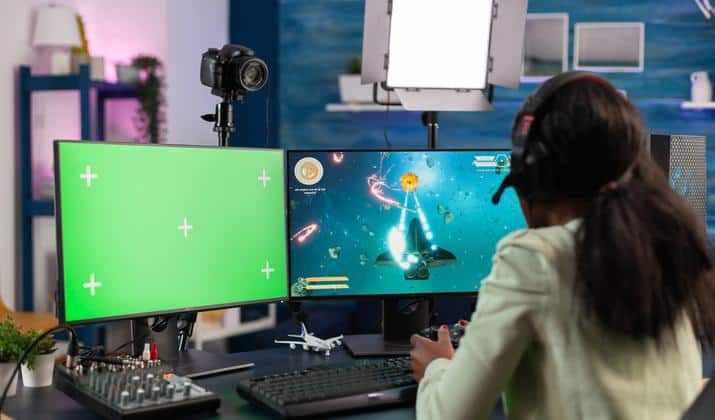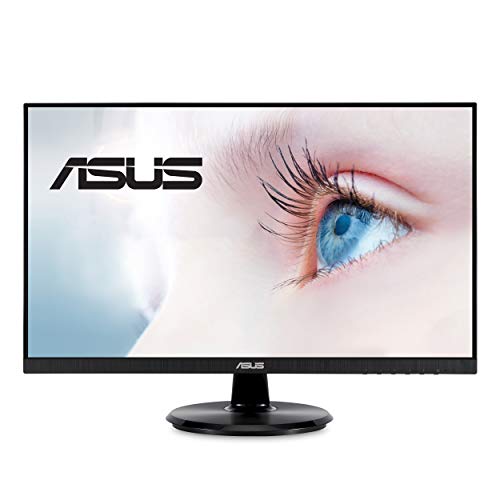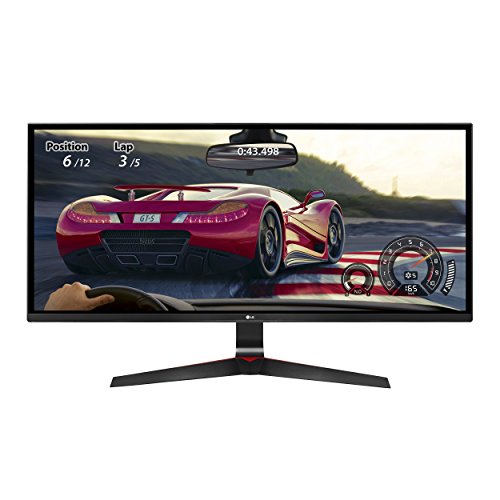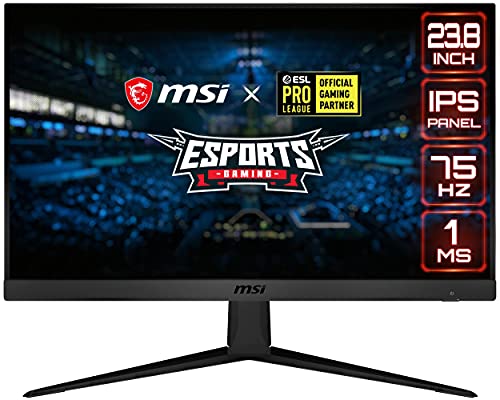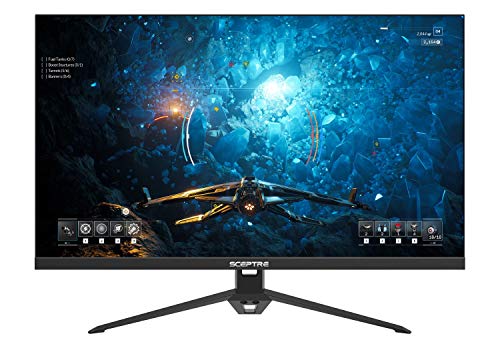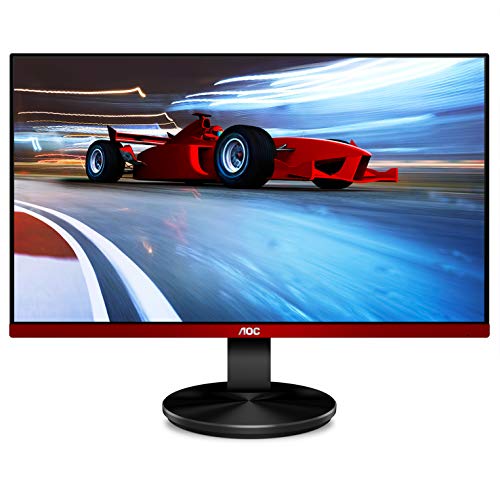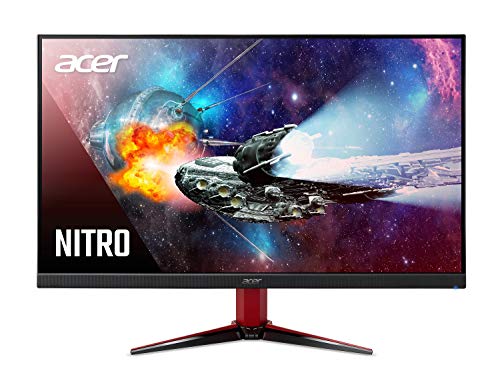Ever since the release of LCD monitors, there has been an ongoing debate about whether or not refresh rates matter.
The answer is that they do matter to some extent.
Many people would say that the higher refresh rate of 144 hertz is far superior. But there are some other things to consider as well.
In this article, we will discuss what you need to know about these two monitors and how they compare in terms of quality and price.
First, let’s get an understanding of what a refresh rate is.
Explore: Best Cheap 2k Monitors
What is Refresh Rate?
Source: Shutterstock
Your monitor’s refresh rate tells you how many times per second it can update the image on your screen.
A monitor is sometimes described with its maximum supported resolution and framerate, for example as “1080p at 60Hz”.
This means that this particular monitor will support a maximum resolution of 1080 pixels x 1920 lines (a native UHD resolution), and draw a maximum of 60 images per second.
The higher the refresh rate is, the more times you can update your screen every second and thus reduce flickering/juddering effects on fast-moving objects as well as produce a smoother picture in general.
This includes games with high framerates (fps) such as fps games like Counterstrike: Global Offensive or Battlefield.
A higher refresh rate is especially important for competitive gamers who rely on their smooth gameplay to be successful, but it doesn’t mean casuals can’t enjoy the benefits of a high refresh rate monitor as well.
The main downside of using an increased framerate (like 144Hz) compared to a normal 60Hz is that you can’t really see much difference in framerate.
Also Read: Best Cheap 240 Hz Monitors
75Hz Monitor
A 75Hz monitor is a type of display that refreshes the image on the screen at a rate of 75 times per second. This can be contrasted with monitors that use a higher refresh rate.
These monitors are great for watching movies. They also help reduce motion sickness in gamers, since the images are moving at a higher rate of speed.
A 75Hz monitor is more expensive than most monitors with refresh rates over 60Hz.
These screens were popular about 15 years ago but have started to decline in recent years as other types of displays became available that offered similar features.
144Hz Monitor
A 144Hz monitor is a type of display device that can show images at a rate of 144 frames per second (FPS).
This is twice the standard refresh rate of most displays, which is 60fps.
A 144Hz monitor is ideal for gaming, as it can provide a smoother and more immersive experience. It can also reduce eye fatigue and headaches in some users.
144hz is fast becoming the standard for gaming especially because it generates a fresh image every 6.8ms which results in a much smoother gaming experience.
A 144hz monitor is not necessary for general use, but it can be nice to have if you do or watch a lot of high-frame-rate content.
Gaming
Source: Shutterstock
75Hz Monitors
If you are getting started as a gamer on a budget, you might want to consider saving some money on your monitor. If that’s the case, then choosing a 75Hz monitor is something to think about.
A 75Hz monitor typically has a slower response time which makes them ideal for fast-paced games.
This type of monitor is good for playing sports, TV shows, and movies with action scenes because the quick refresh rate will make them look more realistic.
In addition to all that, turning down your graphics settings when playing graphically demanding games on a 75Hz monitor can also give you a performance boost.
You will have an edge over those using a 60Hz monitor in games that require quick reflexes.
144Hz Monitors
A 144Hz monitor, on the other hand, has a higher response time which makes them good for first-person shooters and strategy games.
They are also great for watching high-resolution movies or gaming streams because you will not see any motion blur or tearing.
This type of monitor is ideal if you are looking for the best gaming experience.
Some gamers value the 144Hz experience over resolution or color quality, so if you are looking for a gaming monitor, it is worth considering a 144Hz model.
However, not all games take advantage of the high refresh rate and in some cases, you may not see an improvement in performance.
Before you buy a 144Hz monitor, make sure that your graphics card can handle it.
In order to take full advantage of this type of monitor, you will need a high frame rate, so the graphics card should be capable of running games well above 60fps.
Verdict
The choice, however, is not as straightforward as you might think. Both 75Hz and 144Hz monitors have their own gaming advantages and disadvantages, although most gamers will favor a 144Hz monitor.
While 144hz monitors refresh their screen 144 times in one second, 75hz monitors refresh their screen only 75 times in one second.
This means that on a 144hz monitor you will see a lot less motion blur and your games will appear smoother. However, if you’re not a competitive gamer who needs the edge in speed, then a 75hz monitor is perfectly fine for you.
Free Sync
75Hz Monitors
Free sync works by the graphics card telling the monitor to change its refresh rate.
This is usually done when it cannot keep up with your game’s frame rates, but will also occur if you are playing a game that uses vsync (a forced 60fps cap for example).
When this occurs on 75Hz monitors, you will notice tearing.
The monitor is out of sync with your frame rate, meaning it does not have the time to display a whole frame before being instructed to move onto the next one by vsync or whatever limiting mechanism has been applied in that game.
144Hz monitors
When this occurs on 144Hz monitors at 75fps, there are fewer tears and a more consistent image.
This is because the monitor can now display each frame twice, once for every half of the screen.
It might not eliminate tearing 100%, but it will reduce it significantly.
Tearing is essentially a visual artifact that can be caused by mismatches between the frame rate and refresh rate of a monitor.
This happens when the image on the screen is being updated faster than the monitor can display it, which results in part of the old image being shown along with the new one.
Verdict
144Hz monitors win this hands down.
In short, if you’re playing any game that doesn’t have a vsync cap (or you’ve disabled vsync), it’s always better to use a 144Hz monitor over a 75Hz one.
Check Out: Best GPU For Ryzen 5 3600
Frame Rate
Source: Shutterstock
75Hz Monitors
The most frame rate per second a monitor can handle is determined by the refresh rate.
This means that a monitor with a 75Hz refresh rate can handle up to 75fps.
144Hz Monitors
A 144Hz monitor can handle up to 144fps. This is due to the higher refresh rate that allows for more frames per second.
This means that if you are playing a game with high frame rates, you will want to have a monitor with a 144Hz refresh rate in order to take advantage of the smooth gameplay.
While some gamers might think that a monitor with a higher refresh rate is the way to go, there are some cases where this isn’t true.
For example, if you don’t have an Nvidia graphics card that can maintain frame rates above 144fps on average then you won’t benefit from having a 144Hz monitor since your computer cannot even send enough frames for your monitor to display.
Verdict
If you have a powerful graphics card then getting a 1080p 144Hz monitor will offer the best gaming experience, because it has enough power to send over 100fps which your display can support at this high refresh rate.
Also Read: Best GPU For Ryzen 5 2600
Overclocking
75Hz Monitors
Overclocking is the process of making a component run faster than the manufacturer’s specifications.
When it comes to monitors, overclocking can be used to increase the refresh rate beyond what is specified by the panel.
Monitors with a refresh rate of 75Hz can be overclocked up to a refresh rate of around 100Hz or more.
Many people don’t even realize their monitor is overclocked and assume the advertised 75Hz means they can only play games at that speed, but this isn’t true.
144Hz Monitors
If you want to get the most out of your 144Hz monitor, you may be wondering if it’s possible to overclock it. The answer is yes – but not all monitors are capable of being overclocked.
To find out if your monitor can be overclocked, check the manufacturer’s website or contact customer support.
If your monitor can be overclocked, you’ll need to download and use a piece of software called an overclocking utility.
Verdict
For me, Overclocking a 144Hz monitor is not worth it considering its already high rate.
A 75Hz monitor, on the other hand, is a totally different story. The difference in smoothness is immense when moving from 60Hz to 75Hz and even more so when you go up to 100-144Hz.
Also Read: How Much Does It Cost To Build a Gaming PC?
Pricing
Source: Shutterstock
75Hz Monitor
75Hz monitors are not expensive and can be found for as low as $100-$200.
This is a great option for those who are looking for a budget-friendly monitor that still offers high refresh rates.
The components for monitors with this refresh rate are generally cheaper as the demand is not as high. This means that 75Hz monitors can be found at lower prices.
The OEMs for these components do not mind selling them at low prices because of the low demand for 75Hz monitors and how cheap they are to build.
144Hz Monitors
A 144Hz monitor, on the other hand, is not as cheap. The average price for these types of monitors starts at about $200 and can go all the way up to $600 or more.
This is because the components necessary to achieve 144Hz are more expensive and require a better graphics card.
Verdict
A 75Hz monitor is obviously cheaper, but if you have a powerful graphics card and don’t mind spending a little extra for the improved performance, then go for a 144Hz monitor.
However, if you are on a budget or your computer isn’t quite up to par, then a 75Hz monitor should still provide a satisfactory gaming experience. In the end, it really depends on your needs and budget.
Best 75Hz Monitors
ASUS VA24DQ
The ASUS VA24DQ has a 75Hz refresh rate, which is great for gaming and watching movies.
If you are looking for an affordable monitor with a high refresh rate, the ASUS VA24DQ is a good option.
It has a DisplayPort input which makes it compatible with a variety of devices.
The VA24DQ has a 1920 x 1080 resolution, which means it is Full HD and can display high-resolution content without pixel loss or blurriness.
It also features ASUS’s Eye Care Technology to reduce blue light emissions for reduced eye strain during long sessions.
It comes with an ergonomically designed stand that allows for height, tilt, and swivel adjustments.
With the ASUS VA24DQ, you can adjust the height and tilt of your monitor for optimal viewing comfort.
LG 34UM69G-B
The LG 34UM69G-B monitor is a great choice for gamers looking for a 75Hz monitor. The monitor has a fast response time and low input lag, making it ideal for gaming.
The LG 34UM69G-B also features AMD FreeSync technology, which eliminates screen tearing and stuttering to provide a smooth gaming experience.
The monitor also has a wide viewing angle, making it ideal for gaming with friends.
It comes with a single four-way joystick-style button that makes it easy to navigate the on-screen display menu.
The monitor’s VESA mounting holes make it easy to mount this monitor on a wall or arm, freeing up desk space for other items like speakers and paper trays.
This is an IPS panel with wide viewing angles which means you can view your content from almost any angle without giving up color uniformity.
It can even be overclocked to 85 Hz for an ultra-smooth gaming experience that rivals high-end G-Sync monitors.
MSI OPTIX G241V E2
This MSI OPTIX G241V E24 monitor is a high-performance gaming display. It features a 75Hz refresh rate with AMD FreeSync technology and wide viewing angles for games, etc.
This particular model of the OPTIX G series comes in three different sizes: 23″, 25″, and 27″. Customers can choose the most suitable one according to their needs.
It’s very budget-friendly for gamers who are on a tight budget but want a high-performance gaming display with all the latest features at a lower price point.
It weighs only about seven pounds, making it easy to mount on any wall or monitor arm using the VESA mounting support pattern found in the back of this model.
The stand is also very sturdy, offering plenty of support for the monitor. It’s easily adjustable to achieve desired viewing angles.
The OSD menu is easy to navigate with five buttons located at the bottom right corner on the front panel of this gaming display device.
The game mode feature optimizes visuals depending on the specific game genre you are playing like FPS or RTS etc.
Best 144Hz Monitors
Sceptre E248B-FPN168
The Sceptre E248B-FPN168 is a great budget monitor that still offers 144hz. This monitor has a 24-inch screen, 1920×1080 resolution, and a fast response time of just one millisecond.
The only downside to this monitor is that it doesn’t have any built-in speakers, but for the price, it is an excellent monitor.
The Sceptre E248B-FPN168 is the best option for entry-level gamers who are looking to upgrade their current monitor or build a budget gaming rig.
This product can be purchased on Amazon with free shipping and Prime availability at a rate that makes it one of the cheapest monitors available at this screen size.
This is a great option for gamers who are on a budget looking to get into 144Hz monitors but still want an affordable product that offers the latest tech and specs.
AOC G2790VX
The AOC G2790VX is a 27-inch monitor with a 144Hz refresh rate, Adaptive-Sync support, and a low input lag of 12ms.
The AOC G2790VX is a good choice if you want a 144Hz monitor with a low input lag.
It has a TN panel with a fast response time of only 1ms and it supports AMD FreeSync technology.
The monitor also has a low input lag of 12ms, which is great for gaming.
However, the AOC G2790VX doesn’t have any built-in features such as an audio jack or a USB hub.
Acer Nitro VG271
The Acer Nitro VG271 is a 27-inch 1440p monitor with an IPS panel that runs natively at a 144Hz refresh rate. It’s one of the cheaper 144Hz monitors on this list.
The Acer Nitro VG271 has excellent colors and decent black depth – certainly good enough to provide dark scenes in games.
It is very responsive which is great for gaming and it’s capable of producing vibrant, punchy colors in movies too.
The Acer Nitro VG271 further features AMD FreeSync technology to reduce screen tearing when playing graphically intense video games on an Xbox One or PS console.
Final Words
When it comes to choosing the right gaming monitor, your decision should depend on many factors including screen size and resolution as well as refresh rate.
Based on the above, a 144Hz by far is the better option. Not only will you get a smoother gaming experience, but also it can help improve your productivity if you work with graphics or videos.
If you have the money to spend and don’t mind paying a bit extra for quality, then a 144Hz monitor is definitely worth it. If however, you are on a tighter budget, a 75Hz monitor is still a good option.
Tom loves to write on technology, e-commerce & internet marketing.
Tom has been a full-time internet marketer for two decades now, earning millions of dollars while living life on his own terms. Along the way, he’s also coached thousands of other people to success.
